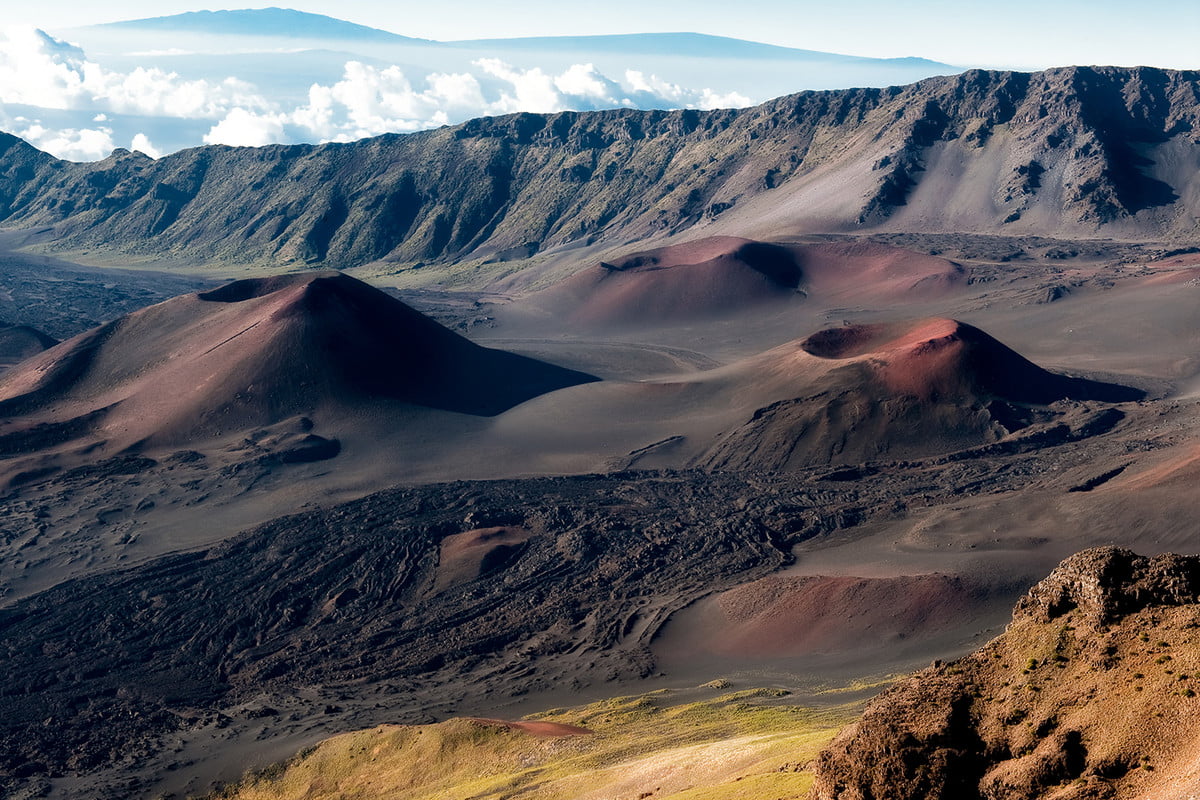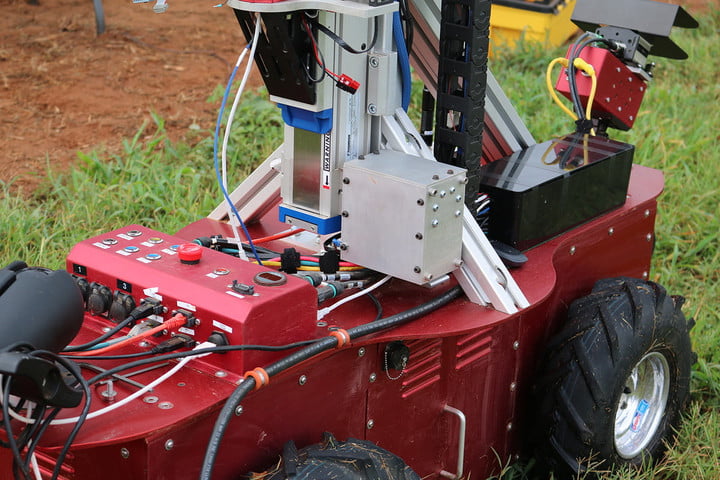How does artificial intelligence help save the world?
- Transfer
- Recovery mode

In 2100, many of our fears, described by both futurologists and science fiction writers, can become a reality. The earth is destroyed, the Pacific Ocean is covered with a layer of plastic. People are mired in hostility, the gap between the rich and the poor continues to grow.
Imagine that in 2100, cars became smart, really smart and took over the world. After a careful analysis of the relationship between humanity and the environment, computer rulers decided to get rid of people before people completely destroy the Earth. In general, a gloomy picture, although many futurologists and science fiction writers are inclined to such a scenario. Of course, everything may not be so scary. So what can you expect from AI?
In order for nothing like this to happen, and artificial intelligence to help a person fulfill good goals, scientists work with a weak (so far weak) form of artificial intelligence. In June 2017, scientists from around the world gathered in Geneva to discuss the main issue - how AI can be useful for humans. The goal is not only to develop a friendly form of machine intelligence, but also to think about how AI can make the world a better place. Of course, scientists and science fiction talk a lot about how machine consciousness can destroy the world we know. Rather, people in this world. But the reality may be different - because AI can be friendly and useful to humans.
Now we are faced with many problems that are not able to solve on our own. If urgent actions are not taken, then the gloomy fantasy described above can become a reality. With the help of AI, we can learn to solve all these problems, or at least minimize their negative impact. Here are some ways to “collaborate” with AI to help make the world a better place.
Ocean protection
Almost all people, with few exceptions, live on land. And for those who are far from the coast, it can be difficult to understand how important the oceans are for us. They occupy approximately 71% of the earth's surface, the vast majority of living organisms live in water - more than 91%. Oceans - a place where life appeared and where it continues to flourish to this day.
Man does little to protect this source of life. For example, the Great Coral Reef is gradually dying - it is not completely dead, but a significant part of it is yes. Corals gradually turn into a hard, dead calcareous skeleton. The vast territories where corals used to live, literally turned into cemeteries that remind people of how much their impact on the environment. Despite attempts by different countries to solve the problem, to limit fishing and the killing of marine mammals, the effect is negligible, and poaching continues to flourish.

In November 2016, The Nature Conservancy (TNC) launched a system that allows tracking poaching boats and other vessels almost in real time. Fish inspectors, reading the data of this software platform, can understand where their attention is required.
The system also helps fishermen who work legally. Previously, they spent a lot of time trying to find schools of fish. Now this time cost will be reduced by about 40%.
“The project team used computer vision and machine learning technology similar to that used in face recognition,” said Matt Merrifield, TNC spokesman.

As for poachers, their movement in almost real time is shown on the Global Fishing Watch website. For this, the SkyTruth system is used , which processes satellite data to determine the direction of movement of large and small ships. Over the entire period of its existence, the system has detected about 86,000 poacher ships.
Prediction of natural disasters
The catastrophes caused by the forces of nature are quite difficult to predict. For decades, scientists have been trying to predict earthquakes in various regions in order to warn the population in time. Now, with the advent of artificial intelligence, experts have at their disposal a new tool - supercomputers allow scientists to receive and process much more information than ever before.

Now scientists are gradually starting to study the nature of earthquakes with the help of neural networks. This is done in order to find signs by which earthquakes can be predicted.
This is done, in particular, by Paul Johnson and Chris Maron, geophysicists from Pennsylvania State University. “If we had done this ten years ago, we would have had no chance,” Johnson said. In order to study the nature of earthquakes, Johnson and colleagues measure not only the characteristics of natural earthquakes, but also try to record the parameters of artificial ones. They are arranged in the laboratory of the university, in the field. The results are processed using neural networks in order to catch patterns, certain parameters by which you can understand where and at what time the cataclysm should occur.
The neural network, which is used by scientists to work with data, has already revealed some patterns. For example, certain acoustic signals in the lithosphere are a clear sign that a cataclysm will occur soon. “The algorithm can not only predict the time and place of the event, but it also shows some characteristics of the phenomenon that we simply did not pay attention to before,” the scientists say.
There is still much work to be done, so far the accuracy of the system is not too high. It is configured to operate in real time, so that all the characteristics can be predicted quickly and without problems.
What about the future?
In addition to earthquake prediction, AI is used in many other areas. For example, to solve the problem of a growing population and food shortages. By 2030, the population should increase to 8 billion people, and will grow at the same pace until 2050 (there are simply no longer-term forecasts, but growth is unlikely to stop).

According to statistics, 1 out of 9 people goes to bed with an empty stomach, and this is not about healthy eating, but about chronic hunger among a significant part of the world's population.
They are trying to solve this problem now - scientists from Carnegie Melon University have created a system called FarmView. This is a software and hardware platform that helps to monitor crops, care for plants and conduct overall monitoring of agricultural land.
The main element of this platform is the robot, which is located directly on the field. He watches the crops, and photos and videos are processed by the software platform. Scientists say that they are developing their platform not to replace a person in the field, but to ensure that the work of farmers is more efficient and brings more products. FarmView allows you to harvest using fewer workers while reducing time costs.

“The methods that are now used in agriculture require a lot of resources, but there are a limited amount of resources everywhere,” say the developers of the system. "We want to increase food production while improving their quality."
And wars too
One of the most ambitious plans for using AI was made by Timo Honkela, a professor at the University of Helsinki. He believes that the computing power and cognitive capabilities of modern computer systems can eliminate conflicts. The professor calls his project "Peace Machine".

According to the scientist, there are three things that humanity urgently needs to correct or control. These are our emotions, communication with other people and inequality in society.
“We live in a complex world where we are all different,” says Honkela. He believes that machines can solve many problems, and not immediately, but gradually. For example, machine translation, subject to improvement, can help people of different nations, religions and beliefs communicate with each other. Conflicts often arise due to misunderstandings. Machines will be able to solve this problem.
“My hypothesis is that if in dangerous situations we can better understand each other, then this will help solve problems peacefully,” says Honkela.
It is about translating not only words, but also semantic constructions in the process of communication between people. For example, a conversation between representatives of different religions may go wrong due to the fact that the meaning put into one’s words by one person will be misinterpreted by another person.
A practical solution is pocket translators that capture emotions, context, and other elements of spoken words. Of course, the end of wars and conflicts is practically a fantasy; if it is a goal, it is very distant. After all, not all conflicts begin due to a misunderstanding by one person of another. Here we are talking primarily about the commercial and political component of conflicts. And this problem is extremely difficult to overcome.
However, scientists are constantly working with AI, trying to find new ways to use machine power to solve modern problems. And gradually, specialists manage to advance in this matter, and we have to follow and wait for the results of their activities.
